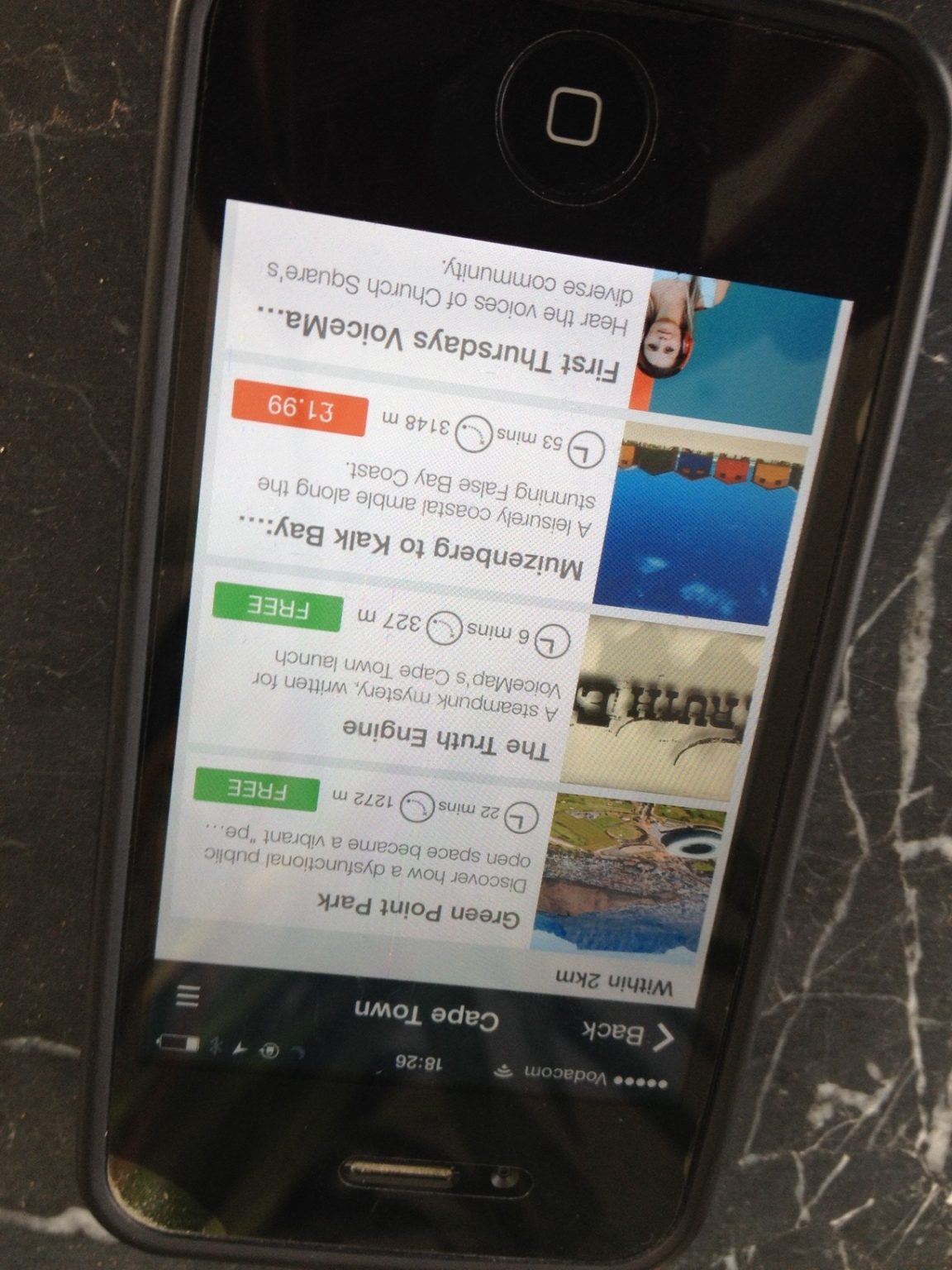VoiceMap chief executive officer (CEO) Iain Manley and business partner Lauren Edwards met last year while creating new content for the operators of Cape Town’s familiar open-top tour-bus. That they didn’t like the kind of commentary provided is an understatement.
“Open-top buses worldwide use location-aware systems that play commentary at specific GPS locations,” says Manley.
“But most tell a city’s story with only one or two voices, which doesn’t allow for diversity or individual perspectives. Attempting to relate the story of the Bo-Kaap in the same way as that of the colonial Company Gardens, or the Grand Parade – where Mandela addressed 200,000 ecstatic people after his release from prison – was an immensely frustrating task. We struggled to capture emotion, without the personal opinions, anecdotes and sense of ownership reflected in the words, ‘I love’, ‘I remember’, and ‘I hope’.”
It was the realisation that the city’s stories were being told by impersonal, detached voices that led to the creation of the VoiceMap mobile app, which allows storytellers to plan, narrate and publish their own audio walking routes which can then be downloaded by users.
The app uses a smartphone’s GPS receiver to tell stories on the move, with new tracks automatically beginning once the user enters the radius around a certain point. All the audio files, the map, and GPS data are downloadable, so there is no need for a mobile data connection during the walk.
“Commentary can be very dry because it is a type of institutional voice,” Manley tells Disrupt Africa, describing why VoiceMap’s audio routes are different.
”You get a way of feeling about a place via that person. So that’s why the voice of that person is very important.
“My best travel experiences have been when a local shows me their city. It immediately cuts through all the abstraction of being an outsider, making you a participant, with a point of reference that helps you identify with a place. You get to share somebody else’s feelings for their home.”
Aside from providing a more personal alternative for users, the app is also looking to provide a means for storytellers to earn money from their creations.
Storytellers use VoiceMap’s publishing tool to create routes, and are able to set their own download fee. Once payment costs have been deducted, the revenues from user downloads are split between the storyteller and VoiceMap.
The company has worked hard to make the tool as easy to use as possible.
“It is possible to create a route where, if you knew the place well enough, you wouldn’t actually have to go there,” Manley says. “For a totally new user who learns things reasonably quickly it takes about an hour.”
Once the storyteller has created their map and entered their text, an editor makes track changes. VoiceMap then provides one test audio track, after which the storyteller themselves records their tracks. One whole walk is usually between 20 and 30 minutes. Manley says it has proved popular with storytellers so far.
“We really are seeing storytellers that move on from one to the next so there really is a stickiness to it which is good. The more contributors we have the more users we have so it’s a nice organic cycle,” he said.
“One of the biggest challenges is matching distance to talk time. That’s mostly what the editors do, they help people through the logistics, if people want to express a radical political viewpoint or something we don’t interfere with that.”
Edwards agrees. “VoiceMap allows for totally different perspectives,” she says. “We have two routes, for instance, that intersect in the Company Gardens, at the bronze sculpture of Jan Smuts. One storyteller writes him off as a ‘no-good precursor to Apartheid’, while the other praises him for his ‘huge contributions to our country’. VoiceMap allows walkers to access these distinctly different points of view.”
Though it seems ideally targeted at tourists, VoiceMap is currently seeing greater traction with locals.
“Locals are pretty excited about it,” Manley says. “They’re positive that they’ve had a good experience and that they’ve learnt something that they didn’t know. In Cape Town we have quite a lot of insular communities all over the place.” However, he said VoiceMap was targeting both, and was partnering with hostels in Cape Town to market the app further.
Though Cape Town is the base of Manley and Edwards, and has been responsible for most of VoiceMap’s uptake so far, the startup has global ambitions.
Funded by South African John Fearon of the JF2 incubator in Singapore, the company raised US$150,000 in seed funding in April but will be seeking more in the near future to expand as far as possible. It already has a presence in South Africa, Singapore, Buenos Aires and San Francisco.
“It is global, and needs a strong marketing push. The biggest thing is getting a certain amount of contributors in enough cities,” Manley says. “In Cape Town we are seeing a good response and all our marketing has been in Cape Town. We’re looking at seeing enough in London by early next year. And the Americas editor is pushing quite hard. San Francisco is a quite important one I think.”
The main thing for Manley and Edwards is that users enjoy their walks rather than fiddling with their phones.
“Nobody wants to be staring at a screen while they explore, so we’ve designed VoiceMap to be as unobtrusive as possible,” says Edwards. “GPS takes care of everything, and you can put your phone in your pocket and forget about it.”
Manley reiterates this. “The best use case we think is to put the phone in your pocket, have some headphones and walk. We don’t want you to interact with the screen, it’s not a filter on reality,” he says.


